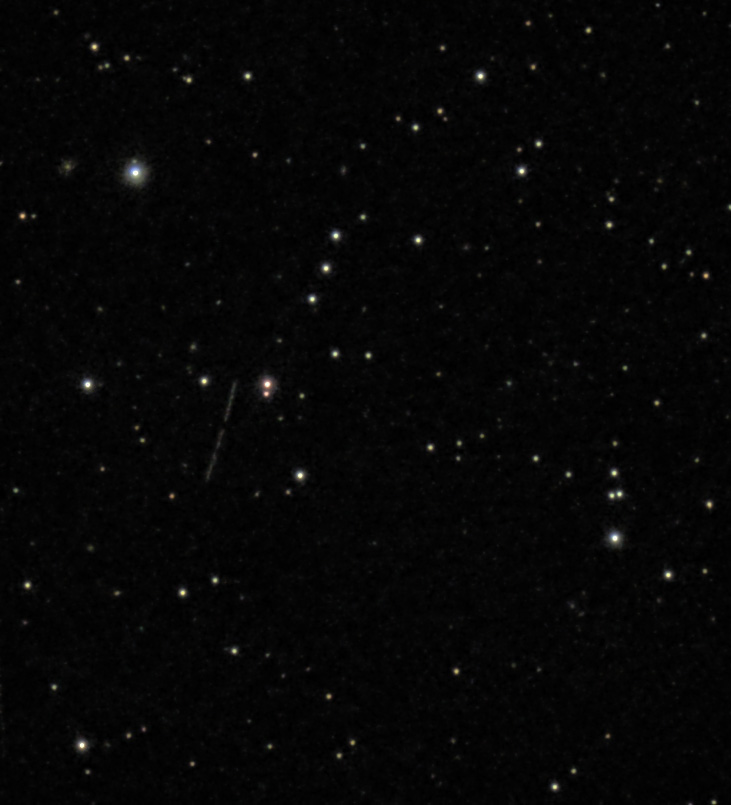Ever since NASA launched their new James Webb Space Telescope last December I’ve been interested in seeing if it was possible to spot it using my 8-inch backyard telescope and camera. Spoiler alert: Yes I can!
Unlike the older Hubble Space Telescope that orbits the earth just 340 miles over our heads and is visible with the naked eye, the JWST is MUCH further away, about 930,000 miles, or nearly 3000 times further than Hubble or four times further than the moon. The part of Webb that faces the earth, the reflective sunshield, is 70 x 45 feet in size. As seen from earth then, the JWST sunshield looks as big as a dime in Chicago would look if viewed from Boston! Obviously we can’t see something that small, but we CAN hope to see sunlight reflected off that sunscreen. The question is, how dim will it be?
Early discussion of this question among amateur astronomers (e.g. here) suggested that the James Webb would appear as bright as a 16th to 18th magnitude star. (Higher numbers mean dimmer.) An 18th magnitude star is 63000 times dimmer than the faintest star visible to the naked eye in a dark rural sky!
However, since my telescope/camera combination can reach as dim as 18th magnitude, I resolved to give it a go.
Here’s my most recent result, showing a trail left by JWST moving south to north in front of the background stars:
James Webb Space Telescope (26 min total exposure Sep 21, 2022)

What I did was aim my telescope at the point in the sky where JWST was supposed to be at that date and time (1:07 AM on Sep 21). Wanting to produce a distinctive pattern, I exposed for 8 minutes, then covered the camera for 2 minutes, then exposed for 6 more minutes, then covered the camera for 6 minutes and then finally exposed for 12 more minutes. That distinctive pattern was to demonstrate that any trail I got near the predicted spot was indeed the JWST and not just a random meteor or satellite.
So how faint was it?
Here’s part of the same image with an overlay (using a program named ASTAP) that shows selected star magnitudes (omitting the decimal point). The JWST trail seems a little dimmer than nearby 17.3 or 17.5 magnitude stars and brighter than nearby 18.1 and 18.3 magnitude stars. I estimate that the JWST was just a little brighter than 18th magnitude.
JWST with Star magnitudes (26 min total exposure Sep 21, 2022)

Some more nerdy stuff:
-
How do I know where to point my telescope? One can generate an ephemeris (a table of dates, times and positions in the sky) from this NASA website for the JWST. It also indicates which direction JWST appears to move and how fast.
-
Since the JWST sunshield is not a perfect mirror nor a diffuse reflector, it is expected that the brightness perceived from earth will vary from time to time. Indeed, my first try at spotting JWST on September 1 was not successful.
-
My second try on September 19 was successful
James Webb Space Telescope (Separate 10 min exposures Sep 19, 2022)

The left image was a ten minute exposure, the next image was a continuation, for a total of 20 minutes. The third image was a new 10 minute exposure, and the rightmost image was a final 10 minute exposure.
The interesting thing here is that the trail in the third image is noticably fainter, and the trail in the fourth image is just barely detectable. This illustrates the point that the brightness of JWST is somewhat variable, depending on which target it happens to be pointing to at the moment.